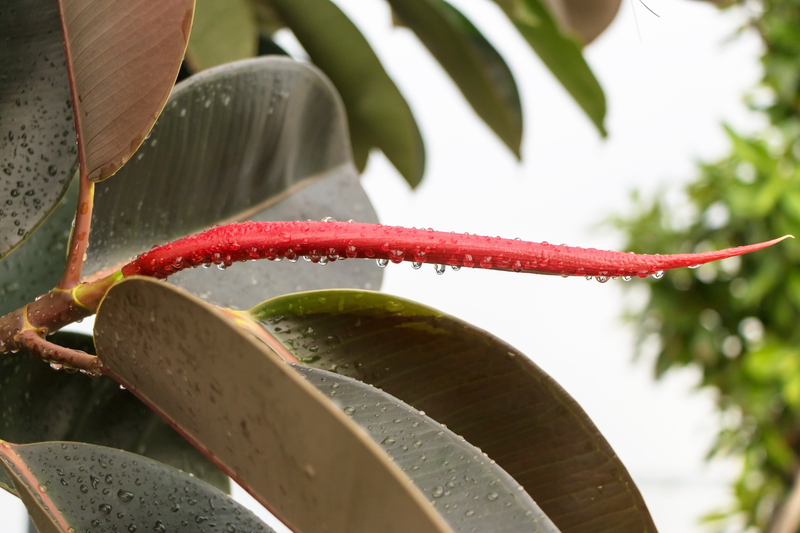Top Lawn Care Methods to Outsmart Summer Drought Stress
Summer drought can turn even the lushest lawns into wilted, brown stretches of grass. As temperatures soar and rainfall lessens, drought stress becomes a major challenge for homeowners and gardening enthusiasts. But with the right lawn care strategies, you can ensure your turf stays resilient, green, and healthy throughout the hottest months of the year. This comprehensive guide explores the best lawn care practices to outsmart summer drought stress and maintain a vibrant, thriving landscape.
Understanding Drought Stress in Lawns
Drought stress occurs when natural water supply can't meet your lawn's needs. High temperatures, dry winds, and a lack of precipitation cause grass blades to lose more water than their roots can absorb. The visible signs include:
- Grass turning yellow or brown
- Blades wilting and folding
- Slow or stunted growth
- Crunchy texture underfoot
Understanding this process enables you to implement targeted drought lawn care methods and minimize damage before it occurs.

Optimal Lawn Watering Techniques for Drought Conditions
Watering is the most crucial aspect of lawn care during drought. However, improper watering can exacerbate the problem, wasting water and preventing grassroots from developing drought resilience. To water wisely:
1. Water Deeply and Infrequently
Deep, infrequent watering encourages roots to grow deeper, where soil retains moisture longer. Aim to apply around 1 inch of water per week (including rainfall), delivered in one or two sessions. This stimulates roots to seek out water deep below the surface, making your grass more drought-tolerant in the long run.
2. Best Time to Water Your Lawn
The most effective time to water is early morning, between 5 a.m. and 10 a.m. This minimizes evaporation loss and allows grass blades time to dry before night, reducing risks of fungal disease. Avoid watering in the heat of the day or late evening.
3. Avoid Overwatering
Overwatering not only wastes precious resources but can also suffocate roots and promote shallow root growth, leaving your lawn even more susceptible to drought. Adjust your sprinkler system according to recent rainfall and current weather conditions for optimal drought management lawn care.
4. Use Efficient Irrigation Methods
- Drip irrigation and soaker hoses deliver water directly to the roots, minimizing evaporation.
- Smart sprinkler controllers use weather data to adjust watering schedules automatically.
- Regularly check and maintain your irrigation equipment for leaks and blockages.
Mowing Strategies to Beat Summer Heat and Dryness
Mowing is not just about keeping your lawn tidy--it's critical for drought-resistant lawn care. The way you mow may mean the difference between a thriving or struggling lawn during periods of drought.
1. Raise Your Mower Blade
Set your mower blade higher, ideally leaving grass 3-4 inches tall. Taller grass shades the soil, reduces water evaporation, and encourages deeper root systems. Never remove more than one-third of the grass blade in a single mow to prevent unnecessary stress.
2. Keep Blades Sharp
A dull mower blade tears rather than cuts, causing ragged, stressed grass that loses water more quickly. Sharpen mower blades at least once per mowing season for a clean, even cut.
3. Leave Grass Clippings
Grasscycling, or leaving the clippings on your lawn, acts as a natural mulch. It helps conserve soil moisture, reduces evaporation, and returns valuable nutrients to the turf, supporting drought-resilient lawns.
Soil Improvement for Drought-Resistant Lawns
Soil health is the foundation of a lush, drought-tolerant lawn. Improving soil structure and fertility enhances water infiltration, root growth, and moisture retention.
1. Test and Amend Your Soil
Conduct a soil test every few years to check pH levels and nutrient balance. Amend acidic or overly alkaline soils, and correct deficiencies to promote strong grass health. Consider adding organic matter like compost or well-rotted manure, which increases the soil's water-holding capacity.
2. Aerate Your Lawn Regularly
Compacted soil makes it difficult for water, air, and nutrients to reach grassroots. Aerate your lawn each spring or fall to relieve compaction, foster deep root growth, and make your turf more tolerant to drought conditions.
3. Top-Dress with Compost
Apply a thin layer of compost (<1/4 inch) over the lawn to enrich soil and improve moisture retention. This technique naturally boosts the lawn's drought resilience and helps break up clay-heavy soils or sandy soils that drain quickly.
Fertilization: Feeding Lawns for Summer Survival
During summer, your lawn's nutrient needs change. Over-fertilizing can burn grass and increase drought vulnerability, so it's important to use fertilizers wisely.
1. Apply Fertilizer Judiciously
Switch to a slow-release or organic fertilizer that feeds the lawn gradually and doesn't overwhelm roots during heat stress. Avoid fertilizing during extreme heat or drought - wait until the weather cools or rain is in the forecast.
2. Use Potassium-Rich Formulas
Potassium helps grass withstand drought by strengthening cell walls and improving water retention. Check your fertilizer's label, and select blends with a higher potassium (K) value when preparing for summer.
Choose the Right Grass Species
Not all grasses are created equal when facing summer heat. Some varieties naturally withstand dry, hot climates better than others. Choosing a species suited to your drought-prone region is key for long-term success.
Warm-Season Grasses
- Bermuda Grass: Extremely heat and drought tolerant, thrives in full sun.
- Zoysia Grass: Superb water efficiency and density, tolerates drought stress well.
- Buffalo Grass: A native prairie grass known for exceptional drought resistance and low maintenance needs.
Cool-Season Grasses
- Tall Fescue: Deep-rooted and moderately drought-tolerant for cooler climates.
- Fine Fescue: Includes hard and creeping red fescues, well-suited to shade and drought-prone areas.
Mulching: The Secret Weapon Against Summer Drought
Mulching is a valuable, often-overlooked technique for drought-tolerant lawn care. A layer of mulch around the lawn's edges, trees, or landscaping beds locks in moisture, moderates soil temperature, and suppresses weeds that compete for scarce water.
- Use organic mulch (shredded leaves, wood chips, straw) for best results.
- Apply mulch 2-3 inches thick, but keep it an inch away from grass crowns to prevent rot.
Managing Lawn Traffic During Drought
Lawn grass is extra fragile during dry spells. Excessive foot traffic compresses soil and damages dehydrated grass, making recovery difficult. To minimize wear and preserve your lawn:
- Limit heavy use during drought, especially when grass looks wilted.
- Designate walking paths or play zones to confine regular activity to specific areas.
- Use stepping stones or pavers for commonly traveled routes.
Weed and Pest Control in Dry Seasons
Weeds and pests thrive when grass growth slows. Diligent control prevents them from overtaking vulnerable turf and outcompeting for limited resources.
1. Hand Pull Weeds
Hand-pulling is effective when soil is moist after watering. For larger infestations, spot-treat with eco-friendly herbicides to avoid harming drought-stressed grass.
2. Monitor for Pests
Drought-stressed lawns attract damaging insects such as chinch bugs and grubs. Regular inspection and prompt treatment with appropriate, lawn-safe pest controls reduce further lawn decline.
Letting Your Lawn Go Dormant: A Natural Survival Strategy
Some grass species naturally turn brown and enter dormancy during extended drought. This is a protective mechanism, not necessarily a sign your lawn is dead. If water restrictions prevent you from keeping the lawn green:
- Allow it to go dormant; grass will recover when rain returns.
- Aim for at least 1/2 inch of supplemental water every 2-4 weeks to preserve root health.
- Avoid fertilizing or heavy traffic until the lawn greens up again.
Smart Technology and New Innovations for Drought Lawn Care
Technology can help homeowners and landscapers optimize drought-resistant lawn care:
- Soil moisture sensors: These devices provide real-time feedback on when to water, helping you avoid waste and reduce stress on your lawn.
- Smart irrigation systems: Integrate with local weather data to deliver water only when necessary.
- Drought-tolerant grass seed blends: Modern breeding programs produce improved varieties with greater resistance and lower water needs.

Drought Recovery: How to Revive Your Lawn Post-Heatwave
Once the heat breaks and rainfall resumes, take steps to help your lawn recover quickly:
- Rake to remove dead grass and debris.
- Resume regular, deep watering as needed.
- Overseed thin spots with drought-tolerant seed blends.
- Top-dress with compost to rebuild soil health.
- Resume a balanced fertilizer program.
Conclusion: Outsmarting Summer Drought with Smart Lawn Care Methods
Successfully managing summer drought stress on your lawn requires a combination of smart watering, proper mowing, soil improvement, and informed maintenance practices. By embracing these top drought-resistance lawn care methods, you'll build a healthier, more resilient turf that can survive even the harshest heatwaves.
Keep learning, testing, and adjusting your approach for your specific climate and grass types. Outsmarting summer drought isn't just about quick fixes -- it's about cultivating strong roots, healthy soil, and sustainable lawn care practices that ensure beauty and durability throughout the growing season and beyond. Your neighbors will envy your lush, green oasis--no matter what summer brings.